UPSC Daily Current Affairs: 20 July 2024 | Current Affairs & Hindu Analysis: Daily, Weekly & Monthly PDF Download
GS2/Polity
SC to Examine Article 361 Granting Immunity to Governors
Source: The Hindu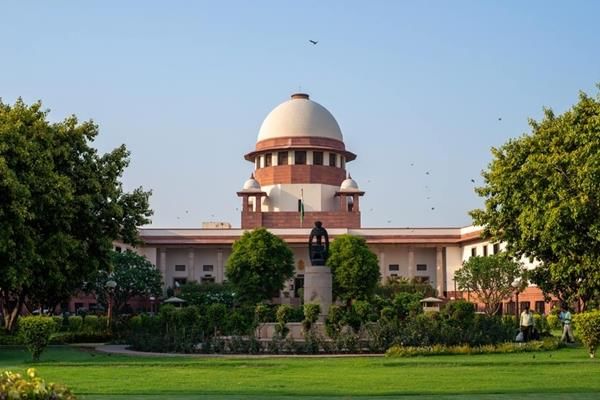
Why in news?
The Supreme Court of India has agreed to examine a plea filed by a woman staff member of the West Bengal Raj Bhawan, who has accused Governor (CV Ananda Bose) of sexual harassment. The plea challenges the immunity granted to the governor of a state under of the Indian Constitution.
Some important constitutional provisions:
Everything related to the office of Governor (appointment, powers, etc) have been discussed under Part VI (Article 153 to Article 162)
- Article 153: There shall be a Governor for each State and the same person can be the Governor for two/more States.
- Article 154: The executive power of the State shall be vested in the governor and shall be exercised by him/her in accordance with the Constitution of India.
- Article 155: Governor of a State shall be appointed by the President by warrant under his hand and seal.
- Article 156: The Governor shall hold office during the pleasure of the President, but his normal term of office will be five years.
Role:
- It is stated that the Governor has a dual role - s/he is the constitutional head of state (bound by the advice of his/her council of ministers) and s/he functions as a vital link between the Union and the State govt.
- Functioning of the office over the years:
- The Governor enjoys certain discretionary powers under the Constitution (Article 163), such as giving or withholding assent to a Bill passed by the state legislature, etc.
- These powers enable governors to make critical decisions, particularly during times of political or administrative uncertainty.
- However, these discretionary powers have resulted in friction with the state government as the Governors have been seen by opposition as an agent of the Centre acting on the behest of the central government.
Can governors’ powers be reviewed?
- Although these powers are constitutionally granted, they are subject to judicial review to ensure they are exercised within legal and proper bounds.
About Article 361:
- It grants the President of India and governors of state immunity from legal proceedings over the duration of their term in office.
- The article is an exception to Article 14 (right to equality) of the Constitution.
- Description of Article 361:
- Criminal proceedings: No criminal cases can be initiated or continued against them, and no arrest or imprisonment orders can be issued by any court.
- Civil proceedings: The Article mandates a two-month notice for any civil proceedings related to personal acts.
- No arrest or imprisonment: The Article restricts any arrest or imprisonment orders during their term.
- The aim of the Article: To ensure that they are not answerable to any court for the exercise and performance of their official powers and duties, nor for any acts done in the course of these duties.
- Call for immediate investigation: An investigation is essential and cannot be deferred until the governor leaves office. Hence, the immunity under Article 361 should not bar the investigation, especially given the time-sensitive nature of such probes.
- Framing specific guidelines: The plea asks for directions to frame specific guidelines under which governors enjoy immunity from criminal prosecution.
- Questioning absolute immunity: The plea contends that the immunity under Article 361 should not be absolute, allowing illegal acts or acts that violate fundamental rights under Part III of the Constitution. It argues that this immunity should not impair police powers to investigate the offence or name the perpetrator in a complaint or FIR.
- Significance of the SC’s Decision to Examine Immunity Granted under Article 361:
- It could have significant implications for the interpretation of constitutional protections for high office holders, and The accountability mechanisms in place for addressing misconduct.
GS1/History & Culture
Assam’s Moidams to be considered for World Heritage List
Source: Indian Express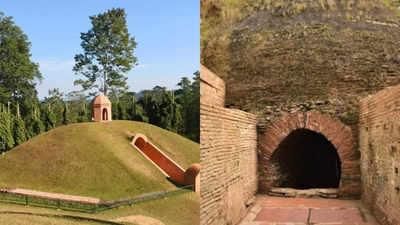
Why in news?
Assam's 'Moidams,' the mound burial system of the Ahom dynasty, will be considered for inclusion in the World Heritage Sites list at the 46th session of the World Heritage Committee.
- India will host this session for the first time from July 21 to 31 at Bharat Mandapam in Delhi. Currently, 1,199 properties from 168 countries are on UNESCO's World Heritage list.
United Nations Educational, Scientific and Cultural Organization (UNESCO)
- It is a specialised agency of the United Nations (UN), headquartered at the World Heritage Centre in Paris, France
- It was founded in 1945 as the successor to the League of Nation's International Committee on Intellectual Cooperation.
- It was established with an aim to promote world peace and security through international cooperation in five key program areas -
- Education
- Natural sciences
- Social or human sciences
- Culture
- Communication/information
- UNESCO is a member of the United Nations Sustainable Development Group. Thus, UNESCO's programmes contribute to the achievement of the SDGs defined in the 2030 Agenda, adopted by the UN General Assembly in 2015.
- UNESCO's activities have expanded over the years. It aids in the translation and dissemination of world literature, assists in the establishment and protection of cultural and natural importance, works to bridge the global digital divide, etc.
- The World Heritage Committee, consisting of representatives from 21 States Parties elected by their General Assembly of UNESCO, meets once a year.
- The Committee is responsible for implementing the World Heritage Convention, determining the use of the World Heritage Fund, and allocating financial assistance upon requests from States Parties.
- It decides whether a property is inscribed on the World Heritage List, examines reports on the conservation of inscribed properties, and requests action from States Parties if properties are not properly managed.
- The Committee also decides on the addition or removal of properties from the List of World Heritage in Danger.
- These sites have been designated as having “outstanding universal value” under the Convention Concerning the Protection of the World Cultural and Natural Heritage 1972.
Categorisation of Sites
- The sites are categorised in three types:
- Cultural heritage sites - It includes historic buildings and town sites, important archaeological sites, and works of monumental sculpture or painting
- Natural heritage sites - It includes those natural areas that have excellent ecological and evolutionary processes, endangered species etc.
- Mixed heritage sites - It contains elements of both natural and cultural significance.
What are Moidams/Maidams?
- The Moidams (also Maidams) are the mound-burial system of the Ahom dynasty (13th century-19th century).
- The mound-burial system of the royals of the Ahom dynasty in Assam's Charaideo district can be likened to the royal tombs of ancient China and the Pyramids of the Egyptians Pharaohs.
- The Ahom rule lasted for about 600 years until the British annexed Assam in 1826.
- Charaideo, more than 400 km east of Guwahati, was the first capital of the Ahom dynasty founded by Chao Lung Siu-Ka-Pha in 1253.
- Previously, those of the deceased with their paraphernalia were buried. However, after the 18th century, the Ahom rulers adopted the Hindu method of cremation, entombing the cremated bones and ashes in a Moidam at Charaideo.
- The Moidams enshrine the mortal remains of Ahom royalty and are highly venerated.
- Although subject to vandalism by treasure seekers in early 20th CE, the group of Moidams in Choraideo has been systematically restored to safeguard its structural integrity.
GS3/Science and Technology
Global Microsoft Outage
Source: The Hindu
Why in news?
On July 19, a significant outage in Microsoft's cloud services affected businesses globally, impacting sectors such as airlines, financial services, media, and healthcare.
- The disruption caused widespread IT system failures, with many Windows PC users experiencing the "blue screen of death," a common indicator of a system crash.
About
- A Windows device may display blue screen errors when the operating system encounters a serious issue, forcing an unexpected shutdown or restart, as per Microsoft.
- The crash screen typically features white text on a blue background, informing users that “Windows has been shut down to prevent damage to your computer.”
- Interestingly, the text for the first Windows blue screen was reportedly written by Microsoft cofounder Steve Ballmer.
- Blue screens are triggered when the operating system calls the KeBugCheck API, acting like a fire alarm that halts the system to prevent damage.
- The KeBugCheck routine brings down the system in a controlled manner when the caller discovers an unrecoverable inconsistency that would corrupt the system if the caller continued to run.
- While no data loss occurs, any unsaved work may be unrecoverable. Various hardware and software issues can lead to blue screen errors.
How do you get rid of the blue screen of death?
- According to Microsoft, the official resolution process for blue screen errors involves shutting down the system, removing any newly installed hardware, and restarting it.
- If the issue persists, users can try starting the system in Safe Mode, a basic version of Windows.
- If problems continue, Microsoft advises using the Get Help app, typing "Troubleshoot BSOD error," and following the instructions provided.
- Late on July 18, users in the Central US region experienced issues with Microsoft's Azure services and its Microsoft 365 apps, mainly involving service management and connectivity problems.
- By July 19, people worldwide couldn't log into their computers, with Windows machines showing a "blue screen error".
- The aviation industry was the most affected by the outage, causing major disruptions from Europe to Asia to the Americas.
- Notably, the London Stock Exchange was hit by the outage as well.
- Configuration change in part of its Azure backend workloads
- Microsoft reported that the disruption was caused by a configuration change in part of its Azure backend workloads, leading to connectivity failures affecting Microsoft 365 services.
- Azure is Microsoft's cloud computing platform.
Root cause
- At the heart of the issue was a software update issued by US cybersecurity firm CrowdStrike for Windows systems, which ended up malfunctioning and caused system downtimes.
- CrowdStrike is a cybersecurity company which produces anti-virus software.
- The issue was specific to Falcon, one of the company’s main software products, which is deeply embedded with the Windows operating system.
- Falcon, an endpoint detection and response (EDR) software.
GS3/Environment
India, Japan Plan Joint Carbon Crediting Mechanism
Source: Hindu Business Line
Why in News?
India and Japan are planning to establish a Joint Crediting Mechanism (JCM) by signing a Memorandum of Cooperation, where they will share emission reduction credits.
Background (Need for Carbon Credit Mechanism)
- In order to limit global warming to 2°C, ideally 1.5°C, global greenhouse gas emissions must be reduced by 25 to 50% in this decade.
- Almost 170 countries have submitted their nationally determined contributions (NDCs) under the 2015 Paris Agreement, which they agree to update every five years.
- NDCs are climate commitments where countries set targets to achieve net-zero emissions. For instance, India aims for net zero emissions by 2070.
About Carbon Markets
- Carbon markets establish trading systems to price carbon emissions, where carbon credits or allowances can be bought and sold.
- A carbon credit equals one tonne of carbon dioxide removed, reduced, or sequestered from the atmosphere as per UN standards.
- Article 6 of the Paris Agreement allows countries to use international carbon markets to meet their NDCs.
What are Carbon Markets?
- Carbon markets are tools to put a price on carbon emissions.
- There are Compliance Markets and Voluntary Markets for trading carbon credits.
Carbon Market in India
- India has historically invested in producing carbon credits and exporting them internationally.
- India issued 35.94 million carbon credits between 2010 and June 2022.
- India aims to expand its local market for carbon credits and promote internal trade.
Legislative Push
- The Energy Conservation (Amendment) Act, 2022 mandates the use of clean energy and sets provisions for carbon markets.
- The Act empowers the government to develop a carbon credit trading scheme.
- Challenges include monitoring carbon credits and ensuring additionality.
India, Japan Plan Joint Carbon Crediting Mechanism
- India and Japan are collaborating on a Joint Crediting Mechanism (JCM) under Article 6.2 of the Paris Agreement.
- A joint committee will be formed to establish rules and guidelines for the JCM, covering project procedures and credit sharing.
- JCM credits will contribute to the NDCs of both countries without double counting.
- Japan will provide support for technology transfer, finance, and capacity building under the JCM.
GS-III/Science and Technology
Transiting Exoplanet Survey Satellite
Source: Business Today
Why in News?
A new study carried out by the Transiting Exoplanet Survey Satellite (TESS) confirmed the theory that there are two black holes at the centre of the four billion light years distant galaxy OJ 287.
About Transiting Exoplanet Survey Satellite:
- It's a NASA mission looking for planets around the brightest stars visible from Earth.
- The aim is to discover thousands of exoplanets circling bright dwarf stars.
- The project finds a variety of planets, from small rocky ones to large gas giants, showcasing the diversity of planets in our galaxy.
- Up to now, it has found 410 confirmed exoplanets, also called "new worlds," orbiting stars other than our Sun.
- This spacecraft follows NASA's successful Kepler space telescope, which found many exoplanets between 2009 and 2019.
- It was launched on April 18, 2018, on a SpaceX Falcon 9 rocket from Cape Canaveral.
- TESS orbits Earth in a unique high Earth orbit lasting 12 to 15 days, placed to provide an unobstructed view of the sky, avoiding Earth and Moon interference.
- The main mission ended on July 4, 2020, and TESS is now on an extended mission.
- TESS is still discovering planets of various sizes, from small rocky ones to large gas giants, demonstrating the diversity of planets in the galaxy.
GS-II/Polity and Governance
Bhusanket Web Portal
Source: PIB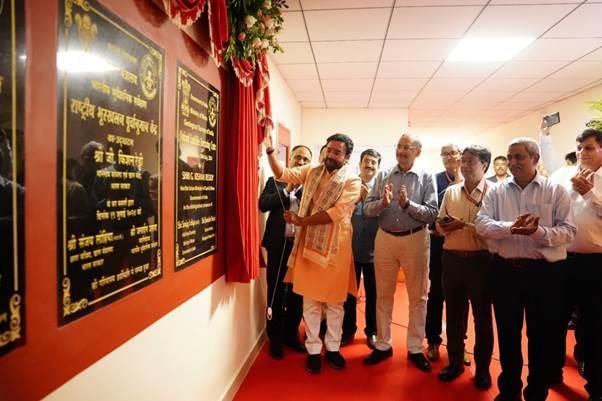
Why in News?
Recently, the Union Minister of Coal and Mines inaugurated the National Landslide Forecasting Centre at Geological Survey of India (GSI) Kolkata and also launched the Bhusanket Web Portal and Bhooskhalan Mobile App.
About Bhusanket Web Portal:
- This website helps spread important information about landslides and predicts them in the short and medium term.
- Linked with the Bhusanket Web Portal, the user-friendly Bhooskhalan Mobile App quickly shares daily landslide forecasts and allows users to update details about landslides.
- The app can be found on the Bhusanket web portal and will soon be on the Google Play Store.
Key facts about Geological Survey of India
- It was established in 1851 primarily to locate coal reserves for the Railways.
- It operates under the Ministry of Mines.
- Its main tasks involve developing and maintaining national geological data and evaluating mineral resources.
- To achieve these aims, the organization conducts field surveys, aerial and marine assessments, mineral exploration, and various geological studies covering multiple disciplines such as geoscience, geotechnical engineering, environmental geology, and natural hazard assessments.
- The GSI also prioritizes the systematic recording of all geological processes, both above and below the surface, across the country and its coastal regions.
- It acts as a 'Repository' for this purpose and leverages advanced computer technologies to share geological information and spatial data, collaborating with other stakeholders in the field of Geo-informatics.
- Headquarters: Kolkata; Regional offices: Lucknow, Jaipur, Nagpur, Hyderabad, Shillong.
GS-III/Science and Technology
Cadmium Telluride (CdTe)
Source: DTE
Why in News?
According to a study by researchers at the Indian Institute of Technology (IIT), Mandi in Himachal Pradesh, CdTe (Cadmium telluride) technology exhibits some of the least environmental impact among solar cell technologies in India.
About Cadmium Telluride:
- It is a substance created by combining two elements: Cadmium (Cd) and Tellurium (Te).
- It appears as a scentless, dark crystalline solid.
- Characteristics:
- It can't be dissolved in water but can be broken down by nitric acid, leading to oxidation when exposed to humid air for a while.
- It has the least emissions of carbon dioxide, minimal impact on the ozone layer, negligible effects on human health, and very low particulate air contamination.
- Uses:
- It is seen as a promising substance for applications like room temperature semiconductor detectors including infrared optical components, lenses, and materials for thin film solar cells.
- CdTe stands as the world's second most utilized Photovoltaic (PV) technology, following silicon.
- Indian scientists from IIT examined five solar cell technologies, including mono-silicon, polysilicon, Copper Indium Gallium Selenide (CIGS), Passivated Emitter & Rear Contact (PERC), alongside CdTe, to determine the most sustainable options for solar energy production in India.
GS-II/Polity and Governance
Bhil tribe
Source: Indian Express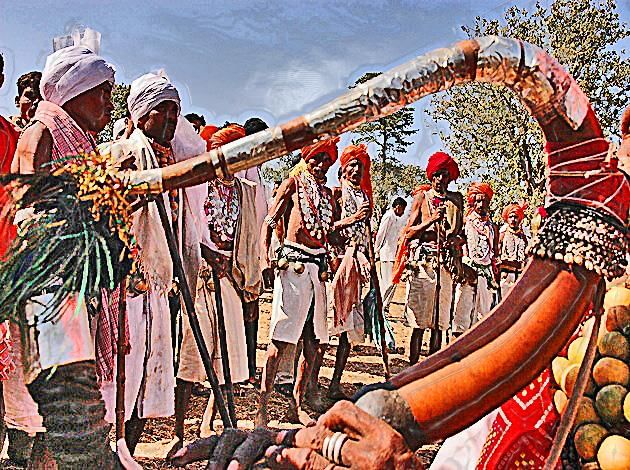
Why in News?
Recently, a large number of people from the Bhil tribe gathered at a rally in Rajasthan’s Mangarh Dham and again raised the “long due” demand for an independent ‘Bhil state’.
About Bhil tribe:
- Bhils are considered among the oldest tribes in India.
- The name 'Bhil' originates from the word villu or billu, which means Bow in the Dravidian language.
- They are known as one of the Dravidian racial groups in Western India and belong to the Australoid tribe.
- They are primarily divided into two groups: central and eastern or Rajput Bhils.
- Central Bhils live in hilly areas spanning Madhya Pradesh, Maharashtra, Gujarat, and Rajasthan, with some also residing in northeastern Tripura.
- They speak Bhili, a language derived from Indo-Aryan roots.
- Their religious beliefs vary depending on the region. Many worship local deities such as Khandoba, Kanhoba, Bahiroba, and Sitalmata. Some revere the Tiger God known as 'vaghdev'.
- They seek advice from Badvas, traditional sorcerers, for various matters.
- The Baneshwar fair, observed during Shivratri in reverence of Baneshwar Mahadev, also called Lord Shiva, is their significant festival.
GS-II/Polity and Governance
International Centre for Audit of Local Governance
Source: Indian Express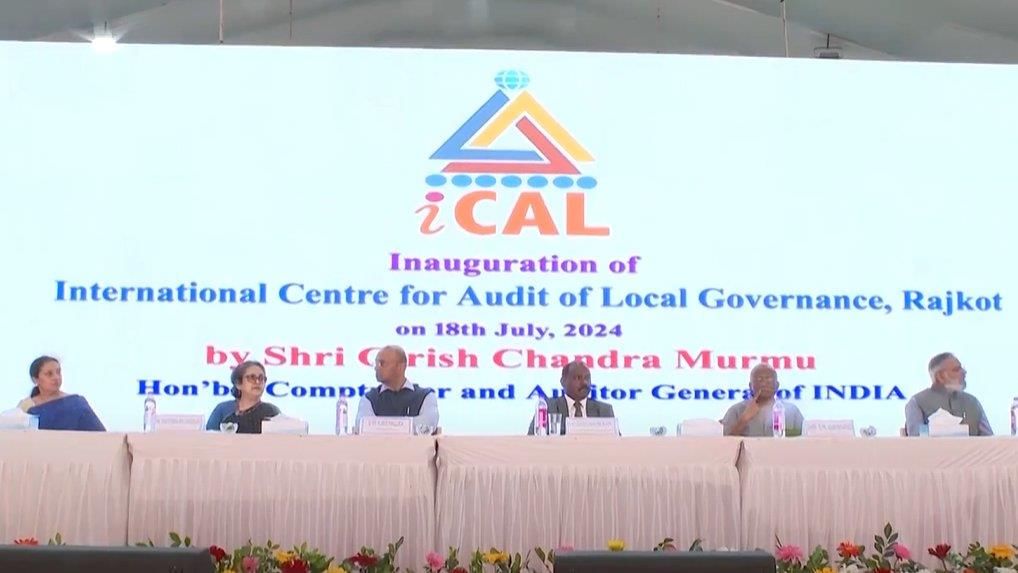
Why in News?
Recently, the Comptroller and Auditor General (CAG) of India inaugurated the International Centre for Audit of Local Governance (iCAL) in Rajkot.
About International Centre for Audit of Local Governance:
- It is a collaborative platform for policymakers, administrators, and auditors associated with local governments.
- Its aim is to strengthen the independence of auditors working with local governments to enhance financial performance evaluation, service provision, and data reporting.
- This platform will also function as a center for enhancing the skills of local government auditors.
- The main goals include creating and improving standards for Local Government Audits, enhancing data collection and reporting, and providing training programs and leadership development opportunities for auditors, executives, and elected representatives.
- The establishment of iCAL highlights the pivotal role of Local Governments in achieving Sustainable Development Goals (SDGs) by promoting community engagement and fostering citizen responsibility and accountability.
- In India, local bodies are audited by various authorities such as the Examiner of Local Fund Accounts (ELFA) or Director of Local Fund Accounts (DLFA) appointed by state governments.
- ELFA oversees the utilization of funds allocated by the state government to local bodies.
- The Comptroller and Auditor General (CAG) conducts audits on all funds, overseeing accounts maintenance and auditing for all levels of Panchayati Raj Institutions (PRIs) and Urban Local Bodies (ULBs).
- Under its technical guidance and support program, CAG also advises and assists ELFA or DLFA.
Ratapani Wildlife Sanctuary
Source: Times of India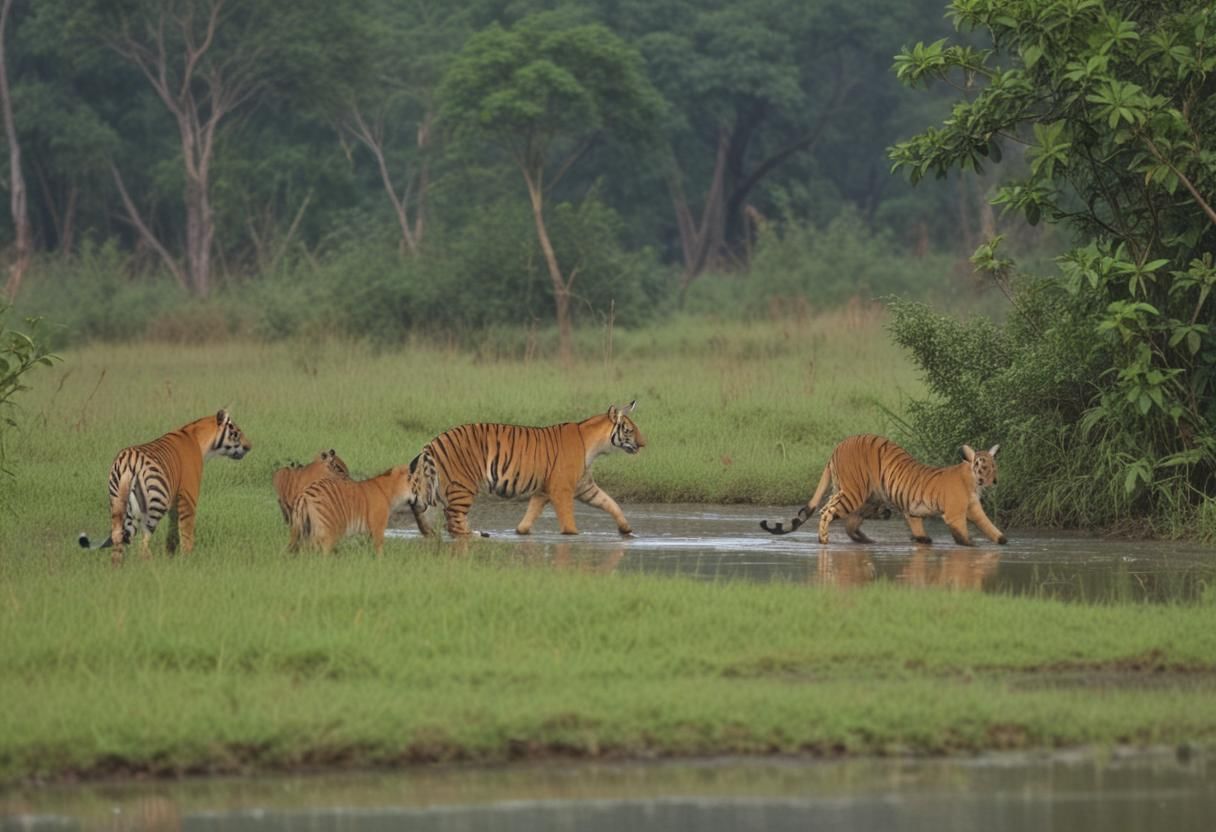
Why in News?
The Madhya Pradesh State Wildlife Board has accorded approval to declare Ratapani Wildlife Sanctuary, on the outskirts of Bhopal, as the eighth tiger reserve of MP.
About Ratapani Wildlife Sanctuary:
- It covers an area of 823 square kilometers in the Raisen and Sehore districts of Madhya Pradesh.
- This rocky forest is located in the Vindhya Hills and runs alongside the northern part of the Narmada River.
- The Kolar River marks the western border of the Sanctuary.
- Established in 1976, the Sanctuary was later expanded in 1983 and designated as a Tiger Reserve in 2008.
- The Sanctuary includes Bhimbetka, a collection of rock shelters and paintings recognized as a UNESCO World Heritage Site.
- Landscape: The terrain comprises hills, valleys, plateaus, and plains.
- Flora: The forest consists of dry deciduous and moist deciduous vegetation, with teak covering approximately 55% of the area.
- Fauna: The Sanctuary is home to around 40 tigers, along with endangered species like Chinkara, Panther, Hyena, Jackal, and various others.
GS-III/Environment and Ecology
Newcastle Disease (ND)
Source: Frontiers
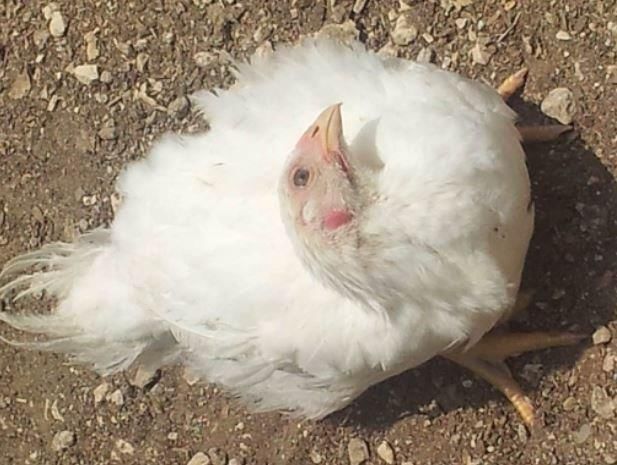
Why in News?
Brazil's agriculture ministry recently declared an animal health emergency in the country's southernmost state of Rio Grande do Sul after a case of Newcastle disease was detected on a poultry farm.
About Newcastle Disease (ND):
- Highly contagious and severe disease that affects birds globally, especially domestic poultry.
- Caused by a virus belonging to the paramyxovirus family.
- Targets the respiratory, nervous, and digestive systems of birds.
- Only impacts birds, notably poultry like chickens.
- Can swiftly lead to sickness and death in large bird populations.
Transmission:
- ND is mainly spread by direct contact with sick or carrier birds.
- Infected birds can release the virus in their waste, polluting the surroundings.
- The virus can spread through direct contact with waste and respiratory secretions, or via contaminated food, water, equipment, and human clothes.
- ND viruses can stay alive for weeks in the environment, especially in cooler temperatures.
- The illness is highly infectious. If the virus enters a vulnerable group of birds, nearly all birds will get infected within two to six days.
- Symptoms: Infected birds may show signs of:
- loss of appetite, coughing, gasping, nasal discharge, watery eyes, bright green diarrhoea, and nervous signs such as paralysis and convulsions
- combs and wattles may look swollen, enlarged, and discoloured (purple or blue)
- reduced egg production, and the few eggs that are produced may be soft shelled and malformed.
Treatment:
- There is no cure for ND. Infected and vulnerable birds near an outbreak are destroyed to stop the disease from spreading.
- To prevent ND, vaccination and strict biosecurity measures are essential.
|
38 videos|5293 docs|1118 tests
|





















